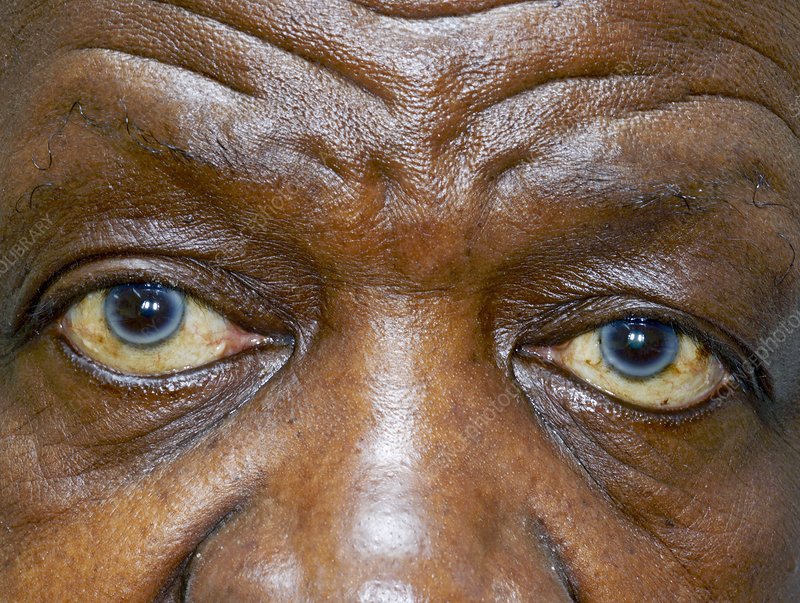No, your eyes do not turn grey when you become blind. The color of your eyes remains the same even if you lose your vision. But when blindness arises due to corneal changes, a transformation occurs, causing the eyes’ color to shift into gray or cloudy white.
In addition, The human eye’s complex and captivating structure has intrigued scientists and individuals alike for centuries. One question that often arises is whether a person’s eyes turn grey when they become blind.
Embarking on this enlightening journey will not only expand your knowledge about this intriguing topic but also provide you with insights that can contribute to your well-being and safety.
What is blindness?
Blindness, a condition characterized by the inability to see or a lack of vision, can encompass a range of degrees and types. In its most severe form, it entails an inability to perceive even light.
Also, corrective measures like eyeglasses, contact lenses, or medical interventions such as eye drops and surgery are ineffective in restoring vision. The sudden onset of vision loss necessitates immediate medical attention.
Various types of blindness:
- Partial Blindness: Often referred to as “low vision,” this state indicates a degree of remaining vision.
- Complete Blindness: In this rare condition, there is an absence of vision, including the ability to detect light.
- Congenital Blindness: Signifying impaired vision from birth, causes include inherited eye and retinal conditions, as well as non-inherited birth defects.
- Legal Blindness: This designation is assigned when central vision is 20/200, even with corrective eyewear. Additionally, it encompasses severely limited peripheral or field of vision (less than 20 degrees).
- Nutritional Blindness: Vision loss attributed to a deficiency of vitamin A. Prolonged deficiency can lead to eye surface damage (xerophthalmia) and decreased night or low-light vision due to impaired retinal cell function.
- Color blindness: denotes the incapability to distinguish variations in colors, primarily in shades of green and red, which are perceptible to others.
Often hereditary, affecting roughly 8% of males and less than 1% of females, color blindness does not impede general vision and does not equate to total visual impairment.
- Night blindness: on the other hand, pertains to challenges in perceiving objects in conditions of diminished light. This condition can stem from genetic factors or acquired causes. Nonetheless, individuals with night vision difficulties typically navigate well in regular lighting conditions, indicating functional vision rather than complete blindness.
- Snow blindness: characterized by temporary vision loss following exposure to substantial ultraviolet light, emerges due to cellular swelling on the corneal surface. Remarkably, even in severe cases of snow blindness, individuals retain the ability to perceive shapes and movement.
Why do blind people’s eyes get white and gray?

The eyes of individuals who are blind often exhibit a white or gray hue, a visual manifestation attributed to a condition termed “leucomelanosis of the eye.” This phenomenon arises when disruptions or damage affect the optic nerve’s role in transmitting nerve signals from the eye to the brain. Consequently, the eye’s capacity to receive typical visual stimuli is compromised.
Also, this disturbance results in the loss of pigmentation within the retina, where cells responsible for processing visual information reside. The outcome is a visual presentation of gray or occasionally milky white eyes.
The root causes contributing to this notable transformation encompass a range of factors:
- Detached Retina: Instances of a detached retina, stemming from injuries or other factors, can disturb the optic nerve’s functionality, triggering the development of leucomelanosis.
- Hereditary Eye Diseases: Certain hereditary conditions can prompt the degeneration of the optic nerve, culminating in alterations to eye color.
- Retinal Pathologies: Conditions such as glaucoma or age-related macular degeneration can impair both the retina and optic nerve, thereby influencing changes in eye coloration.
- Traumatic Injury: Trauma affecting the optic nerve’s integrity can lead to the onset of leucomelanosis.
- Exposure to Toxins or Radiation: Prolonged exposure to specific toxins or types of radiation can inflict damage upon the optic nerve, contributing to the observed discoloration.
Moreover, corneal changes further contribute to this distinctive transformation:
- Corneal Thinning (Keratoconus): This condition, often influenced by hereditary factors or inadequate eye care, involves the thinning of the cornea. Such thinning can influence the eye’s appearance, playing a role in the manifestation of gray or white eyes.
- Corneal Edema: Exposure to significant ultraviolet light, as in cases of snow blindness, can lead to the swelling of cells on the corneal surface. This swelling, in turn, contributes to the visual aspect of gray or white eyes.
What are some potential risks associated with having gray eyes?
Gray eyes bring certain characteristics that may entail potential risks for some individuals. Those with gray-colored eyes might find themselves more susceptible to light sensitivity and certain associated conditions. Some of these risks include:
1. Light Sensitivity: Gray-eyed individuals may experience heightened sensitivity to light due to the lower melanin pigment present in their eyes. This condition, known as photophobia, can lead to discomfort, squinting, and difficulty focusing when exposed to bright lighting. While these effects are usually temporary and do not result in long-term vision loss, managing light exposure can help alleviate the symptoms.
2. Ocular Melanoma: Gray-eyed individuals might face a slightly elevated risk of ocular melanoma, a type of eye cancer that affects the uvea layer of the eye. This risk is particularly linked to UV ray exposure. While ocular melanoma is rare, people with lighter eye colors are more susceptible than those with darker eyes. The annual chance of occurrence is minimal, at around 0.0006 percent.
Taking preventive measures such as wearing wide-brimmed hats and polarized sunglasses can reduce UV exposure and the associated risk. Ocular melanoma can potentially lead to vision loss or the spread of cancer cells.
3. Skin Cancer: Gray eyes often accompany fair skin, characterized by lower melanin pigment levels. Melanin provides a level of protection against the sun’s harmful UV rays. Fair skin, in contrast, tends to redden, develop freckles, and experience sunburn more easily.
It is also more prone to skin cancer. However, it is important to note that even individuals with darker complexions can also be susceptible to skin cancer, emphasizing the significance of sun protection for everyone.
What are the signs and symptoms of blindness?
Blindness or visual impairment manifests as a common symptom of difficulty in seeing, yet the response to this symptom varies among individuals based on their circumstances and support systems. Those born blind undergo a different adjustment process compared to those who lose their vision later in life, potentially facing greater challenges in adapting to their newfound visual loss.
Factors such as available support and psychological traits play a role in shaping one’s experience of this lack of sight.
Sudden loss of vision poses a unique challenge, potentially leading to more significant difficulties in adjusting. Additional symptoms may accompany blindness, contingent on the underlying cause:
- Eye Discomfort: Some individuals may experience discomfort or sensations in the eyes.
- Eye Awareness: Being conscious of their eyes’ condition is another possible symptom.
- Foreign Body Sensation: The feeling of a foreign object in the eye might be present.
- Eye Pain or Discharge: Pain or discharge from the eyes can accompany blindness.
While a blind person might appear normal when at rest, certain conditions can alter the appearance of the eyes.
Corneal infections can cause the transparent cornea to turn white or gray, obscuring the view of the colored part of the eye. In cases of blindness from cataracts, the pupil, typically black, might appear white.
The extent of blindness influences signs of visual loss during mobility. Some individuals with blindness have developed techniques to maintain direct eye contact while conversing, concealing their blindness from casual observers.
What are the causes of blindness?
- Ocular Complications of Diabetes
- Macular Degeneration
- Glaucoma
- Traumatic Injuries
Conversely, in less developed nations, where a substantial portion of the global visually impaired population resides, predominant causes involve infections, cataracts, glaucoma, injuries, and lack of access to corrective eyewear.
It’s worth noting that in developed nations, the term “blindness” is not assigned to individuals whose vision can be corrected with glasses.
In regions with limited resources, infectious causes include:
- Trachoma
- Onchocerciasis (river blindness)
- Leprosy
Among developed nations, the herpes simplex virus is the most prevalent infectious cause of blindness.
Additional factors contributing to blindness include:
- Vitamin A Deficiency
- Retinopathy of Prematurity
- Blood Vessel Diseases affecting the retina or optic nerve, including stroke and infectious diseases of the cornea or retina
- Ocular Inflammatory Disease
- Retinitis Pigmentosa
- Primary or Secondary Eye Malignancies
- Congenital Abnormalities
- Hereditary Eye Diseases
- Chemical Poisoning from Toxic Agents like methanol
What are the risk factors for blindness?
- Residing in underprivileged regions without access to advanced medical care
- Insufficient prenatal care
- Premature Birth
- Advancing Age
- Inadequate Nutrition
- Neglecting safety eyewear, poor hygiene, smoking, family history of blindness, presence of ocular diseases
- Coexisting medical conditions such as diabetes, hypertension, cerebrovascular disease, and cardiovascular disease.
How can you prevent going blind?

Regular Eye Exams: Schedule regular eye check-ups with an eye care professional. Early detection of eye conditions can prevent them from worsening.
Manage Chronic Conditions: Control conditions like diabetes, hypertension, and cardiovascular disease through proper management, medication, and lifestyle changes. These conditions can affect eye health.
Maintain a Healthy Diet: Consume a balanced diet rich in fruits, vegetables, whole grains, lean proteins, and healthy fats. Nutrients like omega-3 fatty acids, vitamin C, and vitamin E support eye health.
Protect Your Eyes: Wear protective eyewear when engaging in activities that pose a risk of eye injury, such as sports, DIY projects, or working with hazardous materials.
Limit Screen Time: Reduce eye strain by following the 20-20-20 rule: every 20 minutes, take a 20-second break, and focus on something 20 feet away.
UV Protection: Wear sunglasses that block out harmful UV rays to reduce the risk of cataracts and other eye conditions caused by sun exposure.
Quit Smoking: Smoking increases the risk of various eye conditions, including macular degeneration and cataracts. Quitting smoking can lower these risks.
Stay Active: Regular physical activity supports overall health, including good circulation to the eyes. It can help reduce the risk of conditions like diabetic retinopathy.
Maintain a Healthy Weight: Being overweight or obese increases the risk of diabetes and other conditions that can lead to vision problems.
Limit Alcohol Intake: Excessive alcohol consumption can contribute to eye conditions like macular degeneration.
Practice Good Hygiene: Proper hand hygiene can help prevent eye infections that could lead to vision loss.
Know Your Family History: Certain eye conditions have a hereditary component. Knowing your family’s eye health history can help you take preventive measures.
Manage Eye Allergies: If you have allergies, manage them to avoid chronic eye irritation that could impact your vision.
Follow Medical Recommendations: If you have an existing eye condition, follow your doctor’s recommendations closely to manage and prevent its progression.
Educate Yourself: Learn about eye health and conditions to recognize potential signs and symptoms early on.
FAQS
What Color Do Blind People See?
Blind people do not have the ability to perceive colors as sighted people do. Without vision, the brain does not receive visual stimuli, so there is nothing to interpret as color. In fact, the concept of color does not exist in the mind at all for someone who is totally blind.
How Can You Tell If Someone Is Blind By Their Eyes?
If someone is blind, their eyes may appear “milky” or “cloudy” due to a condition called “leukocoria”. This means that instead of having a dark, clear center that reflects light, the eyes appear lighter or “whiter”.
Do Blind People’s Eyes Go GREY?
No, blind people’s eyes do not go grey. Blindness does not cause any change in the color of a person’s eyes. The eyes may appear grey or lighter in color due to various factors such as age, the cause of corneal changes conditions like cataracts, or the lack of pigment in the iris.
Why Do Blind People Wear Sunglasses?
Blind people wear sunglasses for a variety of reasons. For some, it is to protect their eyes from damage that can be caused by overexposure to the sun. This is especially necessary for those who have lost their sight due to retinal diseases or birth defects, as their eyes are more vulnerable to light.
How Would You Describe Pink To A Blind Person?
Describing the color pink to a blind person is not an easy task because it is something that must be seen with the eyes. However, if I were to attempt to explain pink to someone who cannot see it, I would say that it is a combination of red and white that creates a light and cheerful hue.
Why Do Blind Eyes Cloud Over?
When someone loses their sight, their eyes often take on a cloudy, white appearance. This is the result of a condition known as “phthisis bulbi,” which is caused by the atrophy of the eye tissues due to a lack of proper blood circulation.
Do Cloudy Eyes Mean Blindness?
No, cloudy eyes do not necessarily mean blindness. Cloudy eyes are usually a symptom of a condition called cataracts, which is caused by a buildup of proteins on the lens of the eye. In severe cases of cataracts, vision can be impaired, leading to blindness.
Conclusion:
To sum up, the notion that a person’s eyes turn gray when they become blind is not accurate. Blindness itself does not alter the physical color of the eyes.
Instead, the color of a person’s eyes remains constant regardless of their visual abilities. The transformation of eye color to gray or white is often associated with underlying factors such as corneal changes or disruptions to the optic nerve.
In the end, remember that being blind doesn’t limit what a person can achieve. With help from technology, special methods, and supportive communities, blind individuals can live meaningful lives, accomplish impressive feats, and inspire others. Ongoing research and medical progress aim to prevent avoidable blindness and enhance the well-being of those with vision challenges











